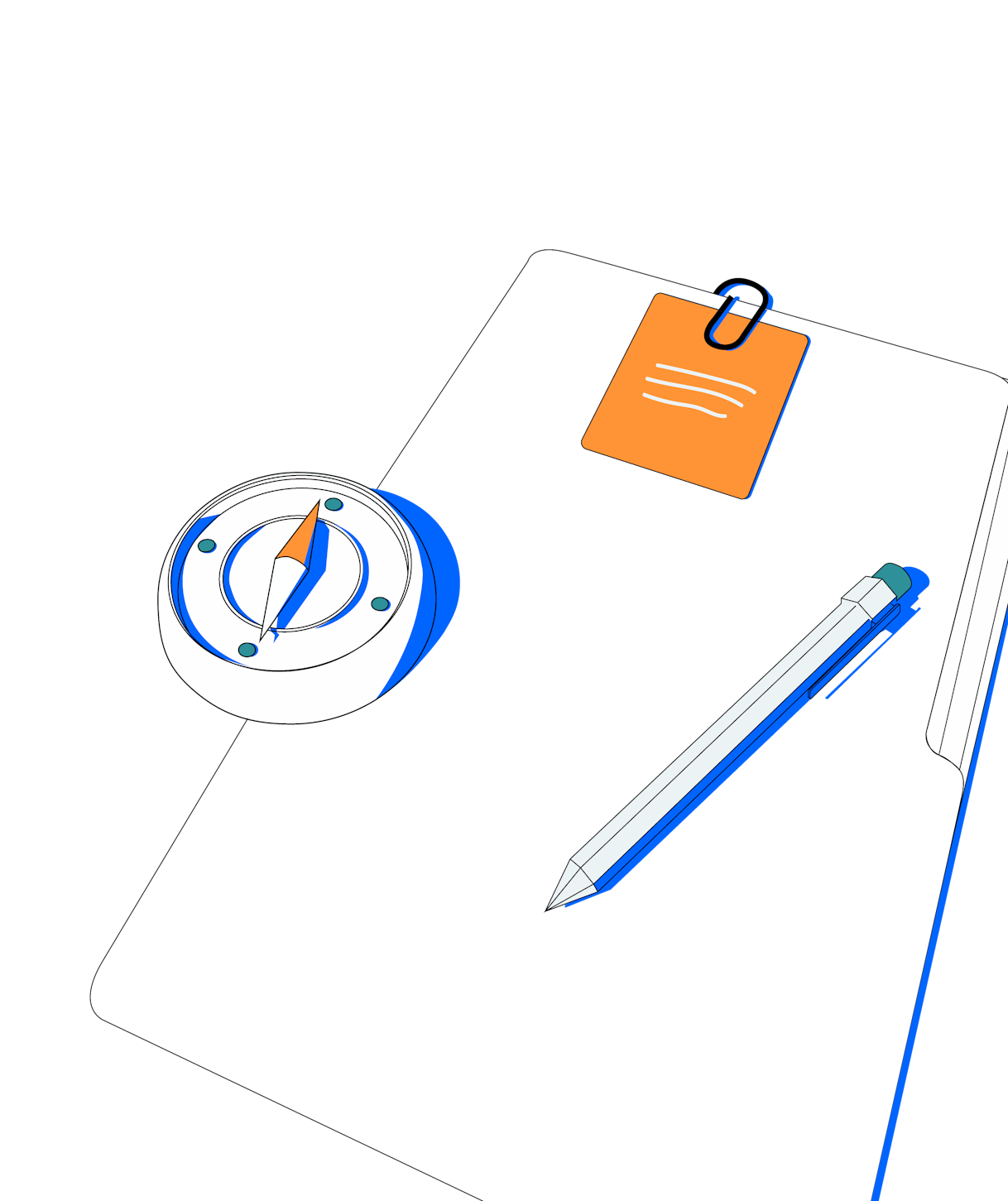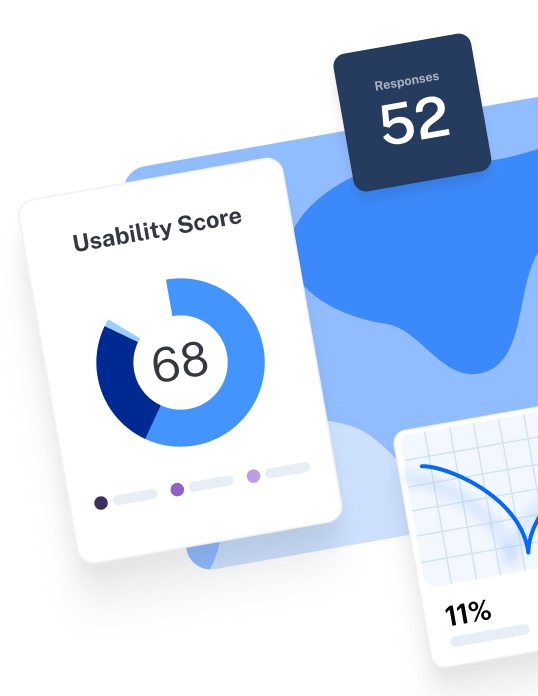Discussions about ethical practices in the tech industry, especially regarding the ethics of AI (artificial intelligence), machine learning, and the algorithms that power the programs and platforms we interact with daily, have been ongoing for years.
One of the critical questions at the center of the debate is who should be responsible for ensuring tech products are created ethically. When pondering this question, I believe that the responsibility falls on everyone involved in creating these products.
With this article, I want to provide a starting point to help anyone running a UX research study understand the ethical implications of our research. Whether you’re a designer, product manager, marketer, or founder—let’s do our best to uphold key best practices when building products for our users.
What are ethics and why are they important?
I first learned about ethics while studying psychology at university. Whenever I planned to conduct a study, the method and overall plan had to be submitted and reviewed by an ethics board. Nowadays, this is a common practice in the psychology industry—just think about well-known experiments like the Little Albert Study or the Stanford Prison Experiment, both of which are criticized for their lack of ethical considerations.
When research goes unchecked, and there are no ethical or moral principles to guide research activities, it can negatively affect human behavior. Examples of how technology affects our behavior are everywhere. We order drinks through an app so we can skip the lineup, we send money to friends to avoid asking waitstaff to split the bill, we risk our lives to take the perfect photo to post on social media—and the list goes on.
Given technology’s impact on our decisions, experiences, and behaviors, we should have principles in place to ensure that all of us involved in the research, design, and development of new products keep these ethical considerations top of mind.
Not only should we avoid impacting our users’ behavior in a negative way, but we should also consider ways to proactively block this negative behavior from happening. Consider this staggering statistic: according to the National Highway Traffic Safety Administration (NHTSA), “660,000 people are using their cell phones while operating a vehicle at any given moment.”
As we’re building products that shape human behavior, we should actively think about the potential negative implications and build solutions to prevent them. For example, companies like Spotify are trying to help their users by creating new ways to interact with the product when driving.
Designers too are realizing the effect of their decisions on the people they’re designing for, which is why frameworks like Usability Heuristics and Ethical Design Principles exist.
Still, the tech industry lacks its own version of a Hippocratic Oath (an oath physicians take to uphold ethical standards) or an ethics board like those found in universities. Incremental progress is being made with several regulations that aim to protect people’s right to privacy, e.g., the GDPR and the Data Ethics Canvas, but we still have a long way to go.
As UX research practitioners, we have a responsibility to ensure our research approach is, at the very least, inclusive, considerate, and brought forth with good intentions. Let’s look at some ethical practices you should consider when building and researching products.
What to consider as you approach a UX research study
Since we involve human participants to guide and inform our product decisions, we should apply moral principles when carrying out any user research activity. Although we lack overarching ethical guidelines as an industry, we can employ our own ethical practices and create our own guidelines to follow. One way to implement this within your own organization is by including best practices and ethical guidance in your UX research strategy.
Here are a few ethical considerations for your next research study and best practices to keep in mind.
- If I ask a personal question, what value will it bring to the team? Is it really necessary to ask this question?
Avoid asking questions related to age, place of employment, where someone lives, or anything else related to demographics. It can be tempting to include personal demographic questions in the warm-up section of a study because we often see these questions in surveys and assume they’re essential.
It can be tempting to include personal demographic questions in the warm-up section of a study because we often see these questions in surveys and assume they’re essential.

Melanie Buset
Senior UX Researcher @ Spotify
Share
However, asking them face-to-face can add a level of discomfort to the conversation. Imagine you ask a participant, “What do you do for a living?” and the participant responds, “Because of the pandemic, I’ve been laid off and I don’t know when or if my job will be available again—the company has lost so much revenue during this period”. Questions like these put the participant in a vulnerable position. They may also introduce a feeling of power imbalance now that your participant has just shared they’re unemployed to someone who is employed and leading the conversation.
When you ask participants to share their experiences and be open and honest, you want them to feel comfortable with you and think that you’re equals (because you are). If asking these types of questions won’t change anything about the product you’re building, consider removing them entirely from your study.
- Can this question/conversation/research be triggering to someone?
It’s easy to think the answer to this question is ‘no.’ The more we work on something, the more difficult it is to see beyond our own experiences and assumptions. Try to think about the deeper connections of your product and how it could affect someone’s livelihood, what experiences they could have built with it, and if some of those experiences could bring up difficult memories.
The more we work on something, the more difficult it is to see beyond our own experiences and assumptions.

Melanie Buset
Senior UX Researcher @ Spotify
Share
For example, imagine you’re doing research for a TV streaming platform and asking questions about the person's favorite series. Perhaps this person recently broke up with their spouse, and reliving those moments of watching the series together makes them feel emotional. Do you think you’d know how to handle a situation like this? It’s important to anticipate “worst-case” scenarios and put some thought into how you’d move forward should these situations arise.
- How can I include a representative sample in my research?
It can be difficult to include a range of individuals in your study because of factors such as language barriers and time zone constraints, but representation is key for effective research.
If representation is not top of mind, issues—like the one that arose with voice assistants that couldn’t recognize different accents—will become evident post-launch.
There are various solutions to help you find participants representative of your customer base. You can employ research vendors, hire a translator or see if anyone else at the company can help out. Another option is to do unmoderated testing so people can respond to your research when it works best for them.
Practices to make you a better researcher
Now we've covered why you need ethics, let's delve into some specific best practices to keep in mind.
Ask for consent
This is non-negotiable. Everyone has agency, and you need to ask for consent to collect information before starting the research. Ask for consent if you plan to record sessions or if you want to share photos or quotes from the participants, and remind them that they can always end the research whenever they’d like and still receive full compensation (if promised). You can gather consent by sending a consent form before your scheduled research session or verbally before recording your in-person session.
Protect people’s identity
If you’ve got consent from your participants to share a quote or other media, do so in a way that protects their identity.
For example, if you want to share a quote with your team, avoid adding the legal name of the respondent next to it. If you’re going to share a participant's story, use a pseudonym or a pattern such as P1, P2, P3, etc., to represent the different participants. If you plan to share a photo or video in a team or company-wide presentation, only share information that can help inform the research, such as a video of the participant having trouble navigating your app.
There’s no need to include a slide with your participants’ faces in your analysis. Imagine if you knew someone was going to share a screenshot of your face across an organization—you probably wouldn't be too happy about that. Again, if it’s not going to help inform the product design or development, don’t do it.
Protect passwords and login credentials
Occasionally, you might work on a research project that will require the participant to log in to their account. If this ever happens, allow the participant to stop sharing their screen or change windows, so you don’t see their sensitive information. You might also need to share your research videos with others in the organization, or others may be observing the live session, so it’s important to be aware of how many people might see this information.
Challenge your assumptions
At a presentation I saw back in 2019, Vivianne Castillo shared an example of how making an assumption turned empathy into pity. In the example, well-intended—but—ill-informed—researchers assumed that women in a particular village would prefer their water supply to be closer to them to minimize the amount of time it takes to get the water. So their solution was to build a well.
After six months, the non-profit responsible for building the well noticed that nobody was using it. When they asked the women why they didn’t use the well, they learned that these women really enjoyed the time they had with each other on their way to the water supply. So moving the supply closer had infringed on their ability to connect with their friends and community.
This is a great example of why it’s important to be aware of our assumptions and challenge them. A good activity you can do with your team to challenge assumptions is an Assumption Slam. It creates a safe space for everyone to identify their own cognitive biases, name their assumptions, map them out based on risk and previous knowledge, and then challenge the remaining assumptions with new research activities.
Create space for feedback
Have you ever been in a conversation where it feels like the other person is taking over and never asks for your opinion? I have—it’s not pleasant. Whether your research involves a 1:1 live interview, a usability test, or a survey, always leave room for your participant to add any additional comments or reflections and to ask you questions.
Whether your research involves a 1:1 live interview, a usability test, or a survey, always leave room for your participant to add any additional comments or reflections and to ask you questions.
Share
A word of caution here: be aware of the kinds of questions your participants ask because you don’t want to answer anything that will lead them to the “right answer.” If you find yourself in a situation where they ask questions about where to go or how to complete the task, flip the question back to them and ask, “Where do you think you would go?” or “Show me what you would do if I wasn’t here.”
Practice self-care
Not only can research be triggering for our participants, but it can also be difficult for those leading it, depending on the product.
As UX professionals, it’s important to take care of our own well-being and mental health, so that when we’re faced with a potentially challenging conversation, we’re well equipped to handle it. If you find yourself in a position where the conversation is feeling a bit heavy, I’ve found the following to be helpful:
- Leave space for the participant and let them take their time to articulate their thoughts. Take a pause and embrace the silence as they gather the information they wish to share with you.
- Only if you feel comfortable with it, share a similar situation that you’ve experienced to help the participant feel like they’re not alone. This brings things back to reality and helps the participant know that although you’re leading the research, you’re still human too!
- Always remind the participant that they can choose to end the session early. They should never be penalized for ending early, regardless of the reason, and they should be fully compensated for their time.
- If you feel like the participant is treating you unfairly, you also have the right to end the session early. To do so, simply say thank you for their valuable feedback and that you were able to gather the insight you needed. If possible, allow them to ask any final questions. But if you’re really having a challenging time, you can just end by thanking them.
- It’s also important to remember that whatever challenges you may face, they’re not about you. We don’t know what people have gone through before they come to chat with us, so if you experience a difficult conversation just remember that you’re not to blame.
Moral principles start with you
This article is just a starting point to a long and complex discussion that involves ethics, human behavior, and ever-evolving technology.
But the answer in our day-to-day is simple: if you see something that you disagree with, challenge it and ask questions, share examples as to why it’s important to gather feedback from many perspectives, and create a safe space for your participants as they provide you with a valuable fraction of their day to give you feedback.
Let’s continue thinking about the impact our decisions have on human behavior and society as a whole and build with good intentions to serve a purpose to humanity.








